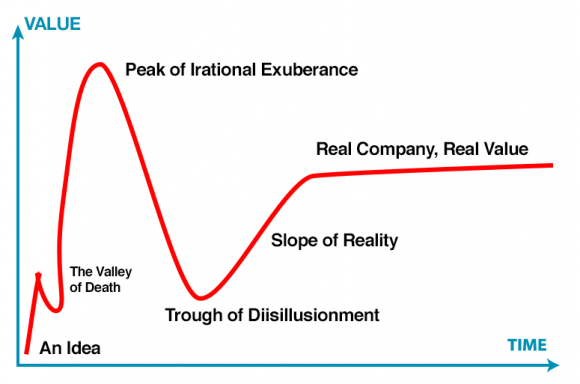
In general, driven by regulations and risks, standard legal contracts grow and grow in complexity until they become unworkable. In the world of private investments, we’re at, if not past, that point.
In the U.S. (and most of the developing world), private investments into startups and funds is regulated, allowed only by rich and/or experienced investors. “Private” in contrast to the public equities and debt which are listed on stock exchanges and sold by brokers.
The customer experience between these two types of transactions is staggering. I can buy shares in a public company in seconds. From my phone. With no contract at the time of sale. No signatures. Nothing but a password to my online broker. I did this the other day in under a minute using my Fidelity app.
Meanwhile, today I made a private investment. The prospectus was 89 pages long. Anywhere between 50 and 100 pages is normal. Like for mutual funds, these are required by law. All for the good, to help investors understand what they are buying.
The problem came after reading that document. After deciding to make the investment. The subscription agreement (the contract for buying the shares) was 55 pages long. I’ve seen these as short as 10 pages, and as long as 120. These are documents full of legalese describing the terms of the investment, plus a series of questions specified by the SEC, to prove that the investor qualifies to invest in private companies. The need for those qualifications is a different debatable issue.
What is getting totally out of hand is the number of times these documents are asking for the name, addresses, and signature of the investor. To be clear, this agreement wasn’t five contracts totaling 55 pages, but a single contract 55 pages in length. Twice I had to fill out how much was being invested. It asked me for my name six times. My address four times. And most staggering of all, SIX signatures!
Clearly, the lawyers who draft these agreements take no consideration of the investors experience in this process. As in any sales process (and fundraising is certainly a sales process), I highly advocate taking a moment to sit in the shoes of the person on the other side of the table.
I’ll take that advice one step further. Fill the agreement with whatever legalese is required, then on the signature page, provide a bulleted summary of the sections of the agreement being agreed to, and one final paragraph saying that the signer affirms all these sections were read and understood. Voila, one agreement, one signature.
Then someday we can lessen the number of sections and pages of legalese, and make this process reasonable.














